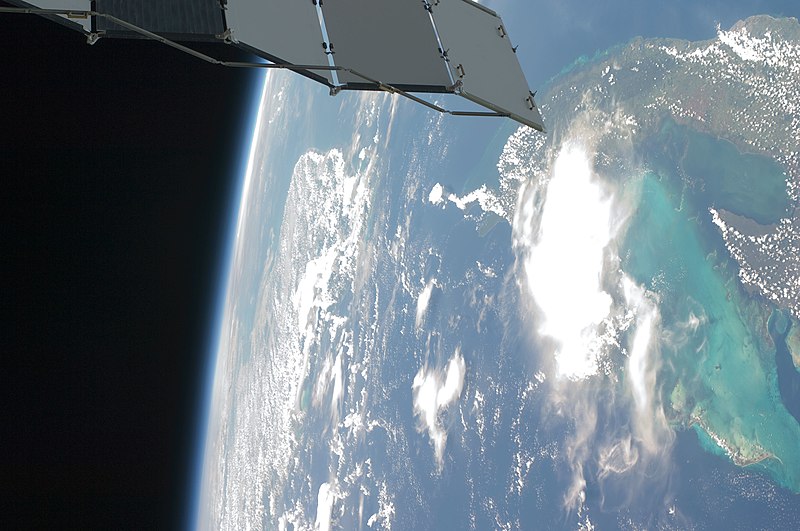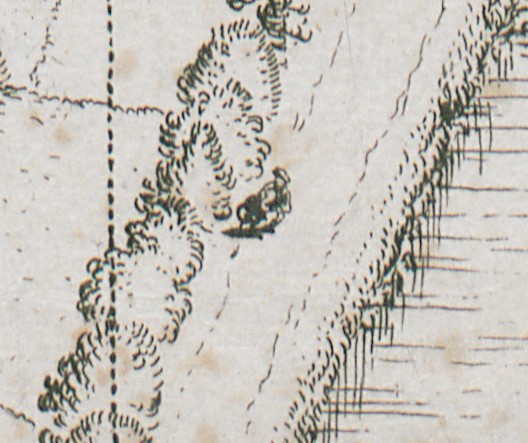Wha lies here? I Johnny Dow. Hoo! Johnny, is that you? Ay, man, but a'm dead now.
— Edinburgh epitaph, quoted in Horatio Edward Norfolk, Gleanings in Graveyards, 1861
Wha lies here? I Johnny Dow. Hoo! Johnny, is that you? Ay, man, but a'm dead now.
— Edinburgh epitaph, quoted in Horatio Edward Norfolk, Gleanings in Graveyards, 1861
D.C.B. Marsh proposed this problem in the American Mathematical Monthly in 1957:
“Solve a3 – b3 – c3 = 3abc, a2 = 2(b + c) simultaneously in positive integers.”
There are a number of ways to go about this, but Raymond Huck of Marietta College found a strikingly simple one. 3abc is positive, so the first equation tells us immediately that b < a and c < a. Add these two facts together and we get b + c < 2a, and hence 2(b + c) < 4a. Substituting this conveniently into the second equation, we learn that a2 < 4a and a < 4. The second equation also shows that a is an even number, so a must be 2, and b and c, which are smaller, must both be 1.
(“Solutions,” American Mathematical Monthly 65:1 [January 1958], 43-46, Problem E1266, via Ross Honsberger, Mathematical Morsels, 1979.)
In 2006, German entomologist Jochen-P. Saltin discovered a new species of rhinoceros beetle in Peru, which he dubbed Megaceras briansaltini.
Remarkably, the insect’s horn closely resembles that of Dim, the blue rhinoceros beetle in the Disney film A Bug’s Life, which was released eight years earlier.
“I know of no dynastine head horn that has ever had the shape of the one seen in M. briansaltini, and so its resemblance to a movie character seems like a case of nature mimicking art … or what could be referred to as ‘the Dim Effect,'” wrote entomologist Brett C. Ratcliffe.
“There are numerous examples of art mimicking nature (paintings, sculpture, etc.), but that cannot be the case here, because there had never been a known rhinoceros beetle in nature upon which the creators of Dim could have used as a model for the head horn. In my experience, then, Dim was the first ‘rhinoceros beetle’ to display such a horn, and the discovery of M. briansaltini, a real rhinoceros beetle, came later.”
(Brett C. Ratcliffe, “A Remarkable New Species of Megaceras From Peru [Scarabaeidae: Dynastinae: Oryctini]. The ‘Dim Effect’: Nature Mimicking Art,” The Coleopterists Bulletin 61:3 [2007], 463-467.)
In the 1970s, San Francisco painting contractor Bill Holland discovered he could save money on business cards by listing himself as Zachary Zzzra in the local telephone directory and telling potential customers to find his number at the end of the book.
This worked well until he was displaced by a Zelda Zzzwramp. He changed his name to Zachary Zzzzra but was overtaken by Vladimir Zzzzzzabakov. So in 1979 he pulled out all stops and became Zachary Zzzzzzzzzra.
Victory brought its trials. “People making illegal calls from phone booths look up the last name in the book and charge them to me,” he admitted to Time. “I don’t pay a damn one of them.”
06/17/2024 UPDATE: Reader Nick Semanko adds that in 1964 two Rhode Island politicians, Raphael R. Russo and Mario Russillo, changed their names to aRusso and aRussillo so that they could appear at the top (technically the left) of the ballot. aRussillo won and aRusso lost.
Four years later the two faced one another for the position of town administrator of Johnston. aRussillo added another a to his name (becoming aaRussillo) and won, though aRusso eventually succeeded him. aaRussillo dropped the extra letters from his name in 1995, but aRusso kept his to his death in 1999. (Thanks, Nick.)
chirk
v. to be or become cheerful
adiaphorous
adj. doing neither good nor harm
nugae
n. things of little value; trifles
crocodility
n. a sophistical mode of arguing
When playwright St. John Ervine lost a leg in World War I, George Bernard Shaw wrote to him: “For a man of your profession two legs are an extravagance. … The more the case is gone into the more it appears that you are an exceptionally happy and fortunate man, relieved of a limb to which you owed none of your fame, and which indeed was the cause of your conscription; for without it you would not have been accepted for service.”

Absolutely hands down one of the most beautiful places to see from space is the Caribbean. You see an entire rainbow of blue. From the light emerald green to the green-blue to the blue-green to the aquamarine to the slowly increasingly darker shades of blue down to the really deep colors that come with the depths of a really deep ocean. You can see all that at one time from space. It’s very curvy, it’s not harsh geometric lines. It’s swirls and whirls and all kinds of wavy lines. It looks like a piece of modern art.
— Astronaut Sandra Magnus, quoted in Ariel Waldman, What’s It Like in Space?, 2016
Swedish botanist Elias Tillander (1640–1693) was so “harassed by Neptune” during a trip across the Gulf of Bothnia from Stockholm to Turku that he made the return journey overland and changed his name to Til-Landz (“to land”).
Linnaeus named the evergreen plant Tillandsia after him — it cannot tolerate a damp climate.
(From Wilfrid Blunt, Linnaeus: The Compleat Naturalist, 2001.)

In his Schilderboeck of 1604, Flemish artist Karel van Mander writes that his contemporary Marcus Gheeraerts the Elder is a good landscape painter who “often had the habit of including a squatting, urinating woman on a bridge or elsewhere.”
None of Gheeraerts’ landscapes are known to survive, but we have a perspective map of his native Bruges that he completed in 1562 and … there she is.
In 1952, British computer scientist Christopher Strachey taught the Manchester Mark 1 computer to write love letters:
Darling Sweetheart,
You are my avid fellow feeling. My affection curiously clings to your passionate wish. My liking yearns for your heart. You are my wistful sympathy: my tender liking.
Yours beautifully
M. U. C.
Strachey’s original program has been lost, but it was reimplemented by MIT digital media professor Nick Montfort in 2014, and now you can watch it pour out its heart online. (Here’s a PHP implementation.)